-
Posts
586 -
Joined
-
Last visited
Content Type
Profiles
Forums
Blogs
Gallery
Events
Exhibition Layout Details
Store
Posts posted by Dunalastair
-
-
For the record, the novel Walking on Glass featured the narrow gauge railway at least three times. It is first encountered in the kitchens in the fantasy thread, where one of the kitchen minions meets a dreadful fate (Banks never pulled his punches). Quiss is later shown the Number Cruncher, which is the subject of my model, with the railway providing the materials handling for the pointless 'DP' process. Finally, the railway is shown to extend well beyond the castle (possibly over a whole planet surface) and the purpose of the food and excrement trains is revealed. It is a disturbing read, and a worthy addition to the collection of books featuring fictional narrow gauge railways.
-
 1
1
-
-
So here is the final version before the disaster, featuring the luminous fish (LED) underfloor lighting. Note this time the 'minion' characters doing the work, 3D printed like almost everything else. The hooded figure represents the Seneschal.







All good fun, but perhaps appropriate that it ended as it did. I'm not sure that I would ever have got that 6.5mm gauge traverser working reliably.
-
 3
3
-
-
Still continuing with my 'diorama a day' (when will they run out?) it is time for probably the strangest of my microlayouts. In the honourable tradition of layouts based on fictional railways, this 6.5mm gauge model was inspired by the late great Iain Banks' second novel, 'Walking on Glass'. The model has small radius Rokuhan 180 degree curves linking the tunnel portals, with a traverser at one end to swap trains. Rolling stock was based on economical Rokuhan 'shorty' mechs and chassis. The layout got to this stage and I was fettling the drawer runner traverser when disaster struck - a heavy bird box fell from a high shelf and smashed the 'glass' floor (actually plastic). Not a good day, and it took me a while to appreciate the resonance.







Features included from the novel included :
The dual identify Castle Doors / Castle Bequest
Narrow gauge steam trains carrying tureens of food from the kitchens
The underground 'number cruncher' hall
The 'glass' floor lit from below by luminous fish
The columns holding up the roof
A machine to grind up ('crunch') the numbers
Vats to remix the debris
Moulds and a moulding machine to make new numbers, completing the pointless circular process
Honey cars (loos on wheels)
The model also included the front wall and the 'DP' swinging doors through which the principal characters entered

-
 1
1
-
 1
1
-
-
Just taken an interest in this line after yesterday's visit from the Tour de France which passed the current electric rack trains.
There are some interesting montages on a regional tourism site:


https://www.auvergnedelyon.fr/index.php/non-classe/le-train-du-puy-de-dome-3962
-
 7
7
-
-
A footrail was a small, generally independent coal drift in Staffordshire, of which there were once many, some operating till the end of the twentieth century. A rope-worked narrow gauge track provided the railway interest. One site, at Apedale, is now a preservation site - this is how it looked when in operation. Such industrial sites were rarely tidy!

The Industrial Railway Society publishes a series of books by A J Booth on similar drift mines, both footrails and further afield. Footrails were collieries, but a wide range of minerals were extracted using such drifts.

https://irsshop.co.uk/British-Small-Mines-North
After a forty year modelling layoff, but before I caught the 3D printing bug, I built a small 4mm scale narrow gauge mining / quarrying layout as a (re)learning exercise. The layout itself was not to a standard I would like to record now, and it has since been broken up. However, one of the final developments was to include a footrail cameo, set in the mid twentieth century. I did preserve the footrail for a while after the main layout was scrapped, so at that point the cameo became a diorama, but the photograph below shows it in its original incarnation.
In those pre-printing days, the track was (I think) Auhagen feldbahn, the tub bodies were cut down hiliter pens and the portakabin was a card kit. A few years later and I can see how a new version of this scene could be much improved, but hopefully this simple treatment might provide an idea of the potential of such industrial sites.
-
 8
8
-
 2
2
-
-
I don't know about 'a few years back', but I have a copy of the 1972 Fisher Barham book 'Cornwall's Electric Tramcars' which includes maps and a good section on the mineral traffic, with some nicely reproduced plates.

https://www.bottbooks.com/product/5419/CORNWALLS-ELECTRIC-TRAMCARS
There seems to be another, more recent but less specific tram book, currently on offer at a sale price


https://graffeg.com/products/lost-tramways-devon-and-cornwall
I also have a useful book (from a modelling perspective) about the King Edward demonstration mine at the School of Mines - I think that I may have bought that book when I visited the museum there. I've known a few graduates of the SofM over the years. I remember attending a meeting at the Geevor mine when I worked for the (then) Cornwall County Council, about the time that a planning application for a reopening of South Crofty mine came across my desk. Lots of interesting museums thereabouts, even away from the iconic engines and mineral tramway cycleways.
-
Today's 'diorama a day' was an uncompleted project to try building a perspective diorama, in the manner of the Jack Nelson LNWR models. The Camborne & Redruth was a narrow gauge electric tramway which as well as operating passenger trams also served the mining industry.


https://en.wikipedia.org/wiki/Camborne_and_Redruth_Tramways
The perspective ranged from about 7mm scale to 2mm scale.
I started with a relatively small scale 3D printed model of the electric loco and the ore tubs.
I then moved on to printed representations of the iconic mine buildings with the steam winder - a building which still survives.
After adding the beam, crank and flywheel, I added the headgear (wood rather than printed plastic), the orebin building and the elevated tramway which linked the two, based on contemporary photographs. The Cornish atmosphere continued with a representation of a non-conformist chapel. The 4mm commercial tram had 3D printed rails added and was later reliveried to represent a Cornish car.
Perspective track was an interesting design challenge, and each successive pole had to be smaller. A second tram in the distance was 2mm scale, by contrast to the approximately 7mm scale newspaper delivery van.
The following stage did not go well. I used modelling clay to inset the track and provide ground texture, but as it dried it shrank and cracked. In hindsight, putting clay on such a smooth surface was a mistake. Sadly, at this stage the project was abandoned, and the buildings and rolling stock now sit in storage boxes. It was an interesting project, but rather large considering my limited available space.
This was once very much an industrial landscape, but ore tonnages were small compared to e.g. coal, and tramways were generally short, with most loco power being (in later years) battery power underground.

I lived for a couple of years in Truro, and enjoyed visiting the industrial archaeological remains in the area.
-
 8
8
-
 1
1
-
 2
2
-
-
Rummaging around, I found my copy of Industrial Railway Record 114, with an article on ISO Speedic locomotives by Bob Darvill of the IRS. He visited the company, by which time 89 locos had been built. There is a drawing by Peter Holmes of one of the locos which I used for my model. The wheels had outside flanges, running on ladder-track. The article reminded me that there was an associated company Mini Tunnel, International, a name which lead me to a drawing showing how the locos were used. The larger image comes from a Google image search and might be ephemeral - the link below the thumbnail image should lead to a clickable version which might last longer. The article is in German but Google should translate.


-
 2
2
-
-
Small battery locomotives for mining and tunnelling projects are familiar, but how small can they get? For today's 'diorama a day' here is one of the smaller (smallest?) examples. If I remember rightly, the prototype was built by ISO Speedic for drainage tunnel construction, with the requirement that it fit within a relatively small pipe. There are a couple of articles in Industrial Railway Record from 1987 / 1988 describing such machines.
https://www.irsociety.co.uk/Archives/back_issues.htm The driving position must have been less than comfortable...
So here is a printed model of the loco with limbo-driver.

The sewer pipe diorama allows a view 'down the pipe' ... the geometry made for interesting 3D design.

... and also 'down the access shaft'. This image was after the loco had been weathered and a matching spoil wagon had been added.

While not necessarily an appealing subject, this must be about as different a loco-powered railway to a GWR BLT as you can imagine. However, if the loco is dispensed with, then the crew access tramway running the length of a Convair B36 might just take the biscuit.

Not one for the claustrophobic.
-
 7
7
-
 1
1
-
-
On 12/02/2023 at 17:13, Michael Crofts said:
I discovered the Burwell Tramway
Also, Wickipedia and Railmaponline refer to a narrow gauge line which connected to the Burwell Tramway near the Cold Store on First Drove but I haven't yet found it on the NLS maps - I'm wondering if it appeared on an edition which they don't have. Has anyone got a map which shows it?
Rather belatedly picked this up. I think that it might have been me who was guilty of asking Matthew to put the orchard NG line onto Railmap. That was at a time when I was doing some map-geeking looking for other agricultural tramways around Cambridgeshire - of which there were a surprising number - most of which are now on Railmap. The Lincs and Norfolk lines are reasonably well known - the Cambs lines less so. As most were in the deep fen, I suspect that they were not much visited. For instance, there is a line mapped across the Cam from Upware, at Long Drove. You might like to consider whether it would be interesting to broaden your history to include these other lines. Either way, you might get some interest from the National Trust, given the line is on the edge of the expanded Wicken Fen rewilding reserve.
-
 2
2
-
 1
1
-
-
On 04/07/2023 at 11:38, EDDY100 said:
You have to import into Blender and then the figure can be posed in any way you like. Also you can add extra features.
I have made a video series but I have had to change my channel and not got round to uploading all my videos yet (summer time, break from modelling).
Ah- thankyou - so not in MakeHuman. That makes me feel a little less dopey not finding how to do it there. I have looked at Blender but tend to use 123D and Cura.
-
Still managing to keep going with the 'diorama-a-day', there is a wonderful website for those who like obscure (mainly) narrow gauge electric locomotives at rail.lu and I have built more than a dozen models based on images on the many, many pages of interesting images. It focuses on the railways of the coal and steel industries in Luxembourg and nearby parts of France, Germany and Belgium.
The image below claims to be the first electric mine locomotive in France, built in Belgium. The body outline is fairly conventional, but the pickup arrangement is not, with trolleys running on rigid pickup rails, apparently towed by the loco using cables.


My 3D printed mini-diorama represents the electrical pickup equipment and the loco with proprietary 16.5mm gauge track. That paint job was more than a little approximate in the photograph and looking at the model today, it was subsequently repainted in grey.
This was an early experiment and mine locomotives soon moved on to using either trolley poles or pantographs on a single conductor wire with current return through the running rails, with battery locos being developed a little later.
-
 1
1
-
 1
1
-
-
34 minutes ago, Kevin Johnson said:
Hi @Dunalastair this is another lovely diorama you have modelled. The attention to detail is very good.👍
Thankyou for the kind words. At the risk of being seen as negative about some of the layouts on this forum (which I do not intend) I do prefer to model relatively obscure prototypes and build rolling stock which is less likely to be seen on other models. Sometimes it works better than other times ...
And to show that I do not always 'do obscure', my main layout is an N gauge representation of Fort William and Banavie in BR green days. However, even then I could not resist including a much simplified and shrunken 2mm scale version of the BA 3' gauge pier railway as it might have looked if it had been electrified. The pier ends rather enigmatically at the edge of the board.

Oh yes - and there is also a completely fictional narrow gauge Ben Nevis Mountain Railway operating from a bay in the old Fort William station. I wonder where that came from?
-
 2
2
-
-
Look good. I too like combining 3D models and 2D backgrounds, but generally only with flat images. What tool did you use to combine foreground and background? Three-quarter views can be harder to embed than when everything is square.
For example, a square image of a well-known scene
and, by contrast, a three quarter view which did not really work as I had hoped
-
Not all of my dioramas are large, but today's in my 'diorama a day' series must be the smallest by far. Clay Cross was well known for the narrow gauge Ashover Light Railway, using exWDLR equipment to link the works to a quarry, but there were also railways within the works site. When I designed and printed this model, my interest was primarily in narrow gauge electric railways, and particularly industrial lines. The number of such lines in the UK was limited, not least because of safety concerns. From what little I know about this (again very obscure) prototype, used for moving pipes on bogies around the plant, it used a central pickup conduit, presumably safer than a rail. My build file has various photographs which I cannot see on the web - they probably came from a discussion on the IRS forum. They show that although the machine could be used in 'ride-on' mode, the operator often walked alongside the 'loco'. Rather a contrast to LMS 4-6-0s and BR Peaks on the nearby main line.
This rather minimal approach to a diorama, where the unusual track is part of the interest, reminds me of some dioramas built by military (and civil) vehicle models. It at least makes for easier storage than the larger designs.
Edit : I wonder if this was actually the S&L Prothero tubeworks in Wednesbury? The filenames of two of the images I have suggest that is possible ...
-
 5
5
-
-
One of the iconic images of the Fairfield Shipyard loco running on Corporation tramway tracks. The SRPS now has the loco.

https://motoringheritage.co.uk/product/fairfield-shipyard-locoon-tram-lines/
And to show that it could also run on conventional track

https://www.flickr.com/photos/51227209@N03/5993394402
-
 8
8
-
-
I have looked out my copy of the Industrial Railway Record special issue on the Whittonstall Railway. It was priced at 3/- in 1970 (!) but I paid a little more for it as a back issue. There are various maps, photographs of No1 pit Chopwell, various images of the line under construction including one of the trestle viaducts (later replaced by embankments), a photograph of one of the curved overhead columns and trains of tubs, details of rope working arrangements, images of the drift entrances, a gradient profile, photos of loco No 1 in a loco-shaped crate(!), loco No 3 with a posed train of workers, plans of the rail arrangements at either end of the line, a drawing of an NCB tub, loco No 1 (or 2) in service, No 3 in about 1909 (a good side view from a modelling perspective), and an image of the winding house which replaced the locos.
The electric railway was steep - up to 1 in 20 with sections at 1 in 12. The first loco arrived in 1907 from Siemens. The wire was double. A second similar design loco soon arrived, but a third was different, more powerful, with a jackshaft between the bogie wheels and different brake arrangements. Braking provided an issue, with overheating causing bearings to melt. From 1913, rope haulage took over the further part of the line, and the whole from 1923. During WW1 the line was used mainly for timber extraction (for pit props) with various branches built into the woods. The locos were then used mainly for shunting the screens until about 1929 when they were scrapped. So not altogether a successful innovation, sadly. Overall, much of the 32 pages are concerned with the mine history, but the booklet provided a useful basis for my diorama.
To conclude, an aerial photo of the Drift in 1934 (after electric haulage had ceased) to give an idea of the nature of the countryside - a steep wooded valley. The WW1 felling seems to have left its mark in this image.

-
There was a short piece about the line in The Times on 9/9/1908.
"The Consett Iron Company (Limited) have lately inaugurated and electrically-worked surface railway for the purpose of hauling coal from the Whittonstall drift to the Chopwell colliery, county Durham, where the coal is cleaned and loaded into railway wagons. The line is about two miles in length. The gradients are somewhat severe, reaching at some locations as much as 5 per cent., the total rise being 250ft. The gauge is 2ft. 2in., and at present the equipment comprises one locomotive, capable of drawing a load of 25 tons. This locomotive is operated by two 56-h.p. motors, and accomplishes the complete journey with the full load in 12min. The locomotive collects the current from an overhead line by means of "bow" collectors. The overhead wire is carried on poles of lattice channel type, fitted with bracket arms to support it above the railway, whilst the poles are fixed in concrete. The line is fed at the Chopwell colliery end by underground cables from a central power station. The ordinary loads consist of 36 tubs, each weighing 5cwt. and carrying 8cwt. of coal. The railway and locomotive equipment was supplied by Messrs. Siemens Brothers, and an order for a duplicate locomotive has lately been placed by the Consett Iron Company with the same firm"
http://www.dmm.org.uk/news19/9080909.htm
36 tubs on 2' 2" gauge must have made an interesting sight. Some similar tubs from Victoria Garsfield (down the valley from Chopwell) have been restored and can be seen nearby. Imagine 36 of these behind an electric loco ...

https://www.flickr.com/photos/77063039@N08/32263492294
-
 5
5
-
-
For today's 'diorama-a-day' (and another obscure railway for @marc smith) here is a simplified representation of the Whittonstall Railway. This was a narrow gauge electric railway in the north east, near Chopwell. It linked drift mines to the west with the main colliery complex. German shareholding favoured electric traction, as with the SG Harton electric railway whose locomotives were similar (but bigger). The Harton system lasted into NCB days, but the Whittonstall system was later converted to cable haulage, more typical of the NG colliery lines in the area. The line was buried in a wooded valley, and very few photographs were taken, but IRS Spectrum 33 featured the railway back in October 1970. Matt Ditch recently posted photographs of the trackbed. A wooden trestle was an interesting feature.
Bridge, mine tubs and loco were 3D printed at about 1:76. Track was proprietary N gauge. I rather like the conjunction of large locos and long trains of small tubs.
-
 8
8
-
-
Thankyou for the kind words. Yes, it is fair to say that the more obscure the better in my book, generally.
One nice feature of Kinlochleven is that at least in the early days, the ships serving the pier tended to be small - the 'narrows' on the loch apparently restricted access. Early images show paddlers, screw steamers came later. From a modelling perspective, that makes modelling something different from the usual puffer a possibility.

https://www.ambaile.org.uk/asset/37342/

https://www.nsdivers.co.uk/wreck-histories/s-s-riverside/
The aluminium company used shipping extensively, with bauxite mines in Northern Ireland, an alumina plant in Burntisland and smelters at Foyers (on Loch Ness, served by the Caledonian Canal), Kinlochleven and Lochaber. All this in addition to trains running on the C&OR (for Ballachulish down the loch from Kinlochleven) and the WHR.
-
 3
3
-
 1
1
-
-
Today's diorama in my 'diorama-a-day' series is a little nominal, but provided a photoplank for models of an interesting narrow gauge railway in what was then a remote corner of the Scottish Highlands. When an aluminium smelter was built to exploit hydroelectric power at the head of Loch Leven, a three foot gauge railway was built from a pier to the factory site, with construction railways up the hill to the dam. The factory line was retained in electrified form to bring in materials and take out finished material. There has previously been discussion of the pickup arrangement on RMWEB and Ted Pollet has modelled a version of one of the locos in 009.
Here is one of the metal-bodied locos with the distinctive tippers. This must have been an early shot, as it has the original style of pantograph and does not have cowcatchers.

https://topstastic.blogspot.com/2020/10/kinlochleven-works-electric-locomotives.html
By contrast, one of the wooden-bodied machines, sitting on the quay, has the later pantograph and cowcatchers.

This was the track arrangement when the smelter was operating - there are not many larger scale OS maps of this area. Screen capture from NLS.
My chipboard photoplank / diorama used the good old fashioned approach of using tree bark to represent a rock face - the line was cut into the side of the mountain. Rolling stock was printed, as were the distinctive overhead line standards combining power and telephone lines. Track is Tri-ang and grass is static. In this image, cryolite sacks are being taken from pier to factory.
This time the load is cut timber, bound for construction works.
Before the wires went up, but a trial load of aluminium ingots is outward bound.
This time one of the wooden bodied locos, before even the masts were erected, with a tower wagon. Note the diagonal planking and the lack of cowcatcher.
There is a prototype image of this train, captioned as 'commutator segments', presumably for the generators.
And finally, a couple of those distinctive tipper wagons, on an earlier diorama.
This was an interesting project, and unusually for me, the locos are powered, using Hornby 16.5mm gauge power bogies, envisaging an operating microlayout. The proprietary pantographs do work, and I had hoped to make the overhead part of the pickup circuit. Sadly, I never managed to make space for the planned larger layout. Perhaps one day ...
-
 16
16
-
 1
1
-
 2
2
-
-
Yesterday's diorama post in my 'diorama a day' of Hurst Castle was my most recent effort. Today's is one of my first, Invershin viaduct on the Far North line.

The castle in the background became a youth hostel, but was subsequently sold by the SYHA. Canmore has a useful aerial image from recent years, but I don't remember this being available when I built my diorama.

https://canmore.org.uk/site/13018/invershin-station?display=image
My version included the adjacent station at 1:450 on an A4 plywood base. Buildings and bridge were 3D printed, while the rolling stock came from Shapeways - not my own design this time. The type 2 and mk 1finishes used pens rather than brushed paint, but was till not as neat as I would have liked - I duly discovered that 1:450 is not an easy scale to work in.

And with some more trees

The varnished river worked reasonably well, but the road surface was less successful.
-
 2
2
-
 1
1
-
-
On 25/06/2023 at 07:53, Dunalastair said:
I like this image of a more conventional railroad scene with a tunnel mailcar at Grand Central Station. A working version of the elevator would make an interesting model. I feel temptation beckoning - get thee behind me Satan...
I fear that I have not altogether resisted temptation ...

The idea is that a printed RPO which has been sectioned lengthwise would make a backscene for the narrow gauge tunnel car and the elevator. Scale currently 1:76. Early days in the 3D design, and I'm not sure if the elevator will elevate.
-
 2
2
-
-
Nice figures. How do you change the poses in Makehuman? I like the tool, but I have not worked out how to do that, yet.



























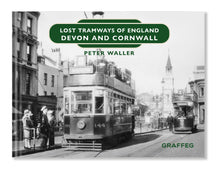

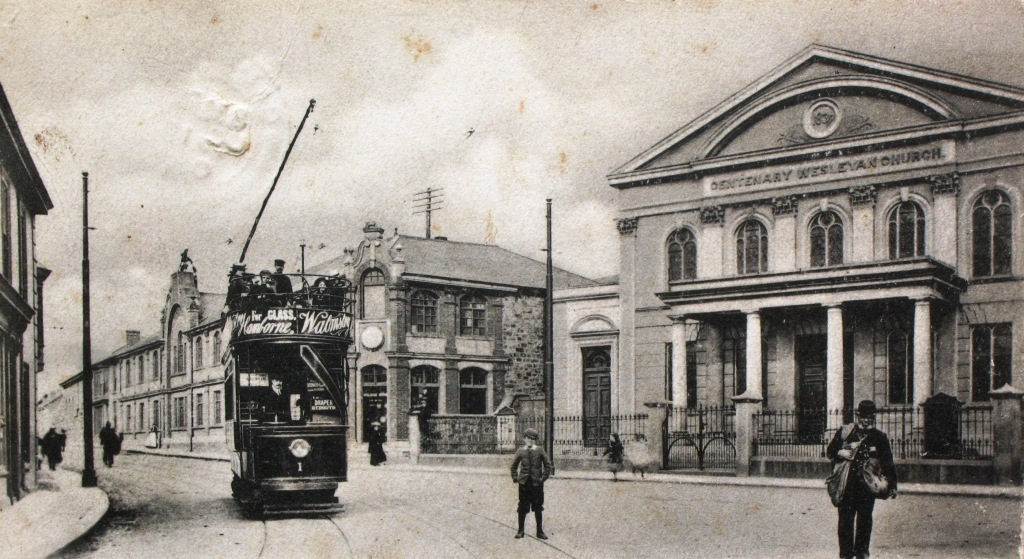










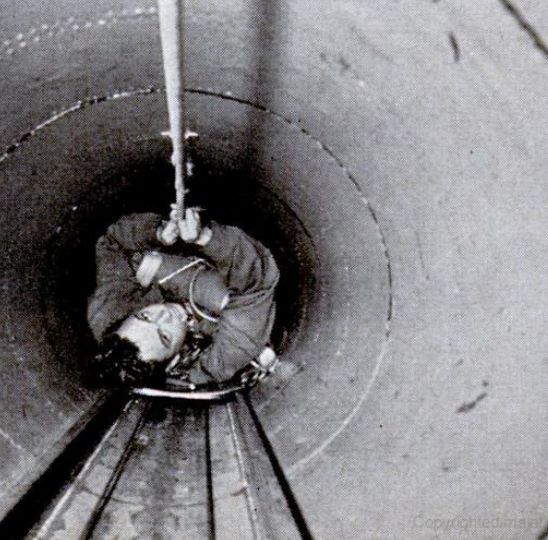

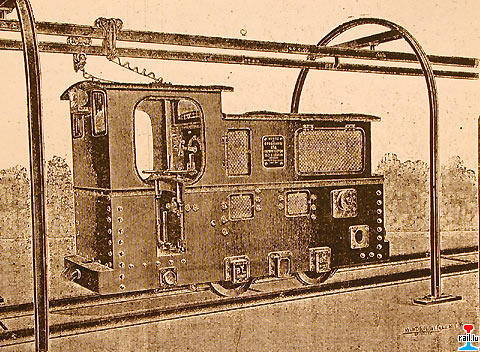
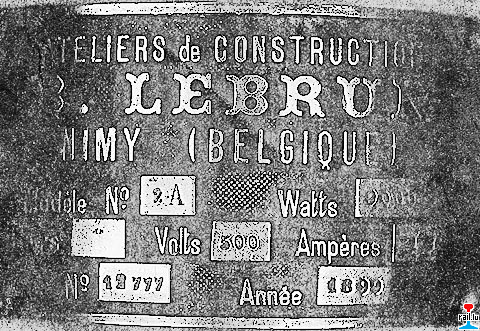





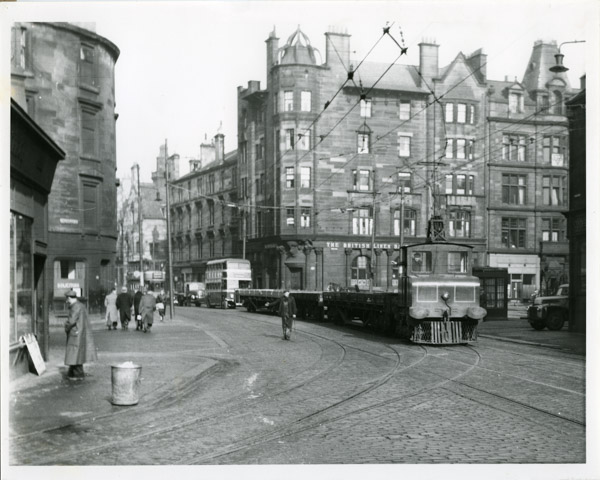
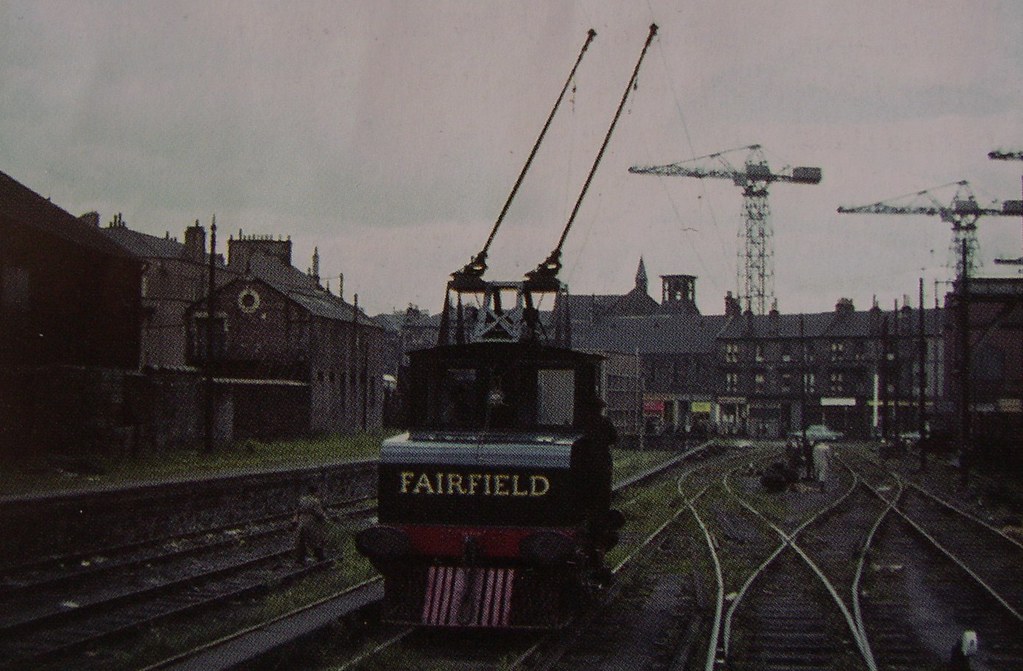
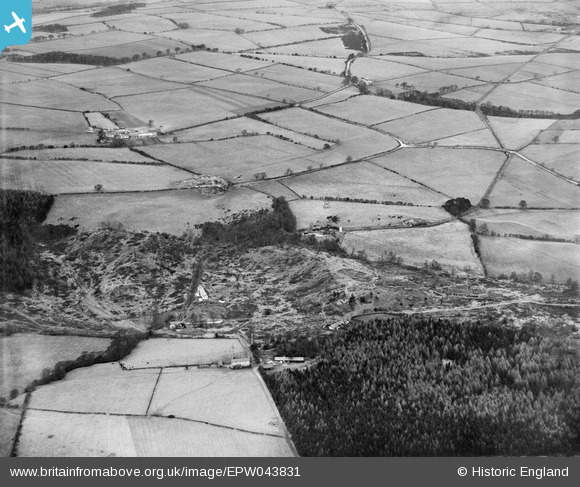














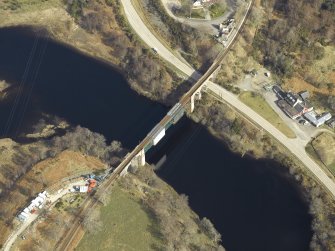



Brickworks transfer trolley diorama
in Boxfiles, Micro layouts & Dioramas
Posted · Edited by Dunalastair
In my 'diorama a day' series, I previously posted a couple of medium sized dioramas representing brickworks using overhead electric transfer trolleys (in 'Bedfordshire brick press shop diorama'). In some of the smaller brickworks a simpler system was used, still with electric traction but with third rail pickup on smaller 'locos'. Simpler trolleys were also used, but I did not represent these in this diorama. Note the skid-plates between the bricked up kilns and the transfer rail track. When strong enough forklift trucks became available, such NG railed material handling systems were soon replaced. Not exactly a 'railway' in the public railway sense, but heavy industrial processed employed many such railed systems to move heavy materials and products around works sites. Railways and tramways used to move material from quarries to works were more visible to the public eye (and lens) but images of these internal systems are rarer and often only available in specialist books and journals. This makes it difficult to show the prototypes of some of my dioramas - not always helped by my not remembering which book / journal the inspiration came from.
This rather smaller diorama is again 3D printed, using a filament printer, finished using acrylic paints.